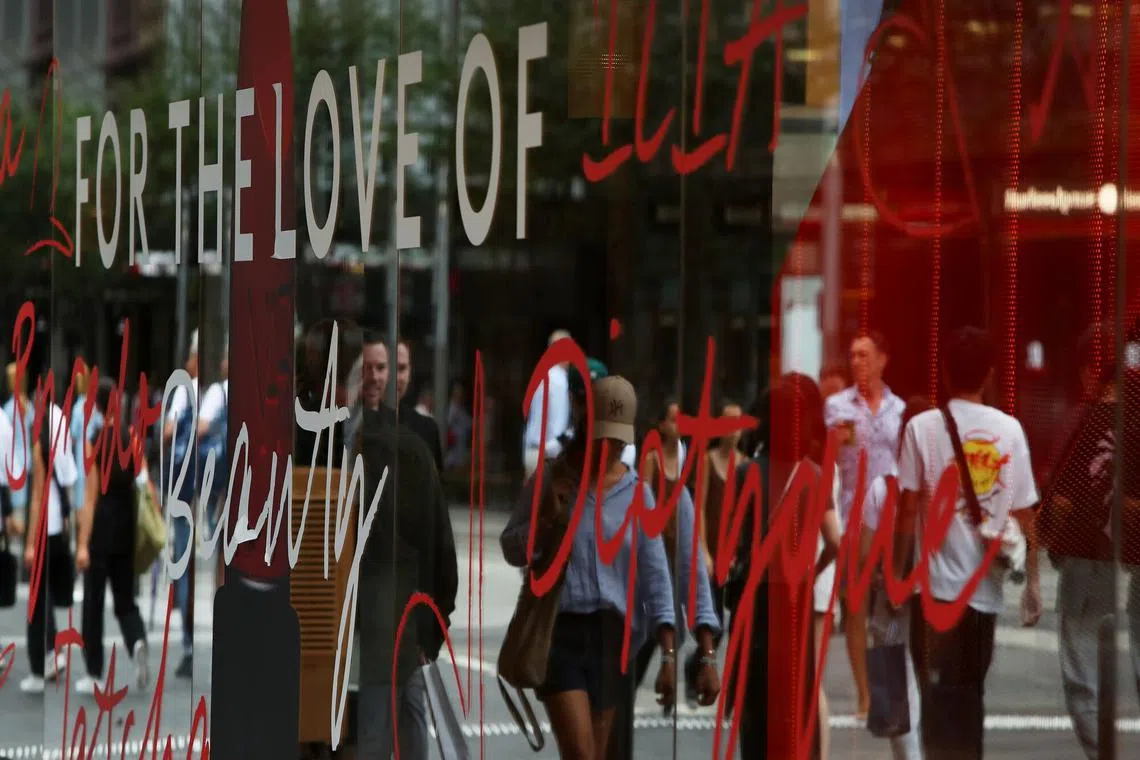Australian unemployment hits 2-year high, currency drops
Sign up now: Get ST's newsletters delivered to your inbox

The economy added just 500 jobs in January, confounding expectations for a 25,000 gain.
PHOTO: BLOOMBERG
Follow topic:
SYDNEY - Australian unemployment climbed to a two-year high at the opening of 2024, highlighting the nation’s cooling labour market and sending the currency lower as traders brought forward bets on an interest-rate cut.
The economy added just 500 roles in January, confounding expectations for a 25,000 gain and well shy of numbers needed to hold down the jobless rate, government data showed on Feb 15. Unemployment advanced to 4.1 per cent from 3.9 per cent, while the participation rate was steady.
The weak figures prompted swaps traders to price the Reserve Bank of Australia (RBA) embarking on a rate-cutting path as early as August. That sent the Australian dollar to the day’s low of 64.78 US cents. The Singapore dollar edged up 0.1 per cent against the Australian dollar to 1.1435 as at 10.55am.
In explaining the surprising weakness in the report, the Australian Bureau of Statistics said the data reflected seasonal patterns as January was a popular month for holidays. Also, some people who were marked as unemployed in December were actually in between jobs, meaning the unemployment rate could drop back again.
Annual jobs growth cooled to 2.6 per cent in January from 3.7 per cent a year earlier.
“This easing in the labour market reflects the slowdown in economic growth,” RBA economic analysis department head Marion Kohler said in a speech on Feb 13. “Adding to this, labour supply has increased, boosted by elevated population growth and record high participation in the labour force.”
Looking ahead, the RBA expects the labour market will slow further, sending the unemployment rate to 4.4 per cent by mid-2025.
Bloomberg Economics analyst James McIntyre estimates that Australia’s economy needs more than 32,000 new jobs a month to keep up with an expanding labour force.
Australia’s Treasurer Jim Chalmers was philosophical on the report in comments after its release.
“It’s consistent with an economy which is softening and we’ve made it clear now in a couple of budget updates, that we expect the economy to slow in the course of 2024,” he told reporters in Canberra.
“That’s what happens when you’ve got interest-rate rises working their way through the system, when you’ve got the systemic inflation and when you’ve got global economic uncertainty which is characterised by concerns over China and obviously two major conflicts as well.” BLOOMBERG

